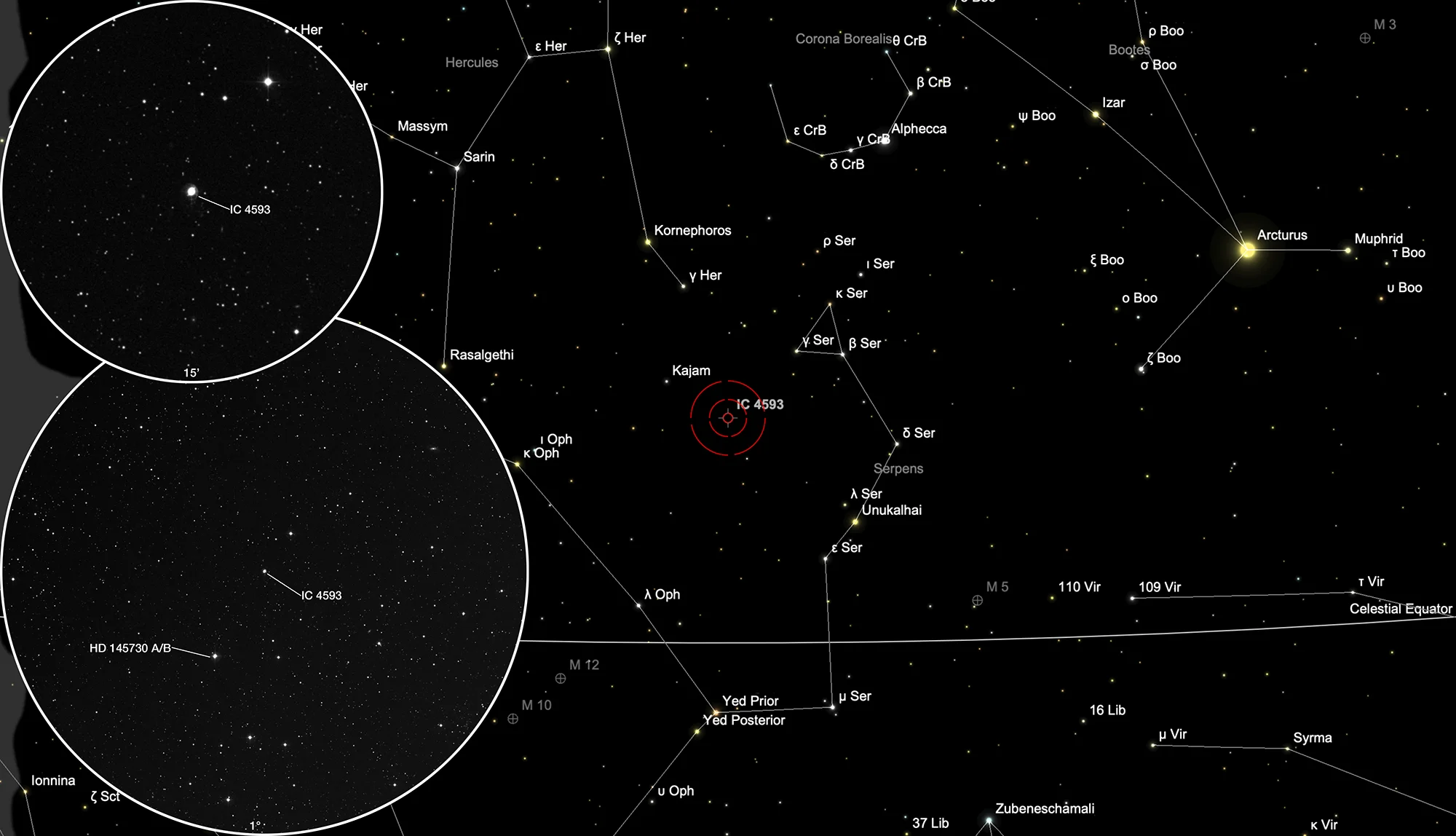Planetary Nebula IC 4593

History
This planetary nebula was discovered in 1907 by Williamina Fleming. She first worked as a maid for Edward Pickering, Professor of Astronomy at Harvard and later became one of the most famous female astronomers of the 19th century. She inspected plates taken with the 8 inch f/5.5 refractor at the Harvard College Observatory. The telescope was equipped with an objective prism and the planetary nebula was identified by its spectrum. [196, 277]
Physical Properties
| Designations | PN G025.3+40.8: IC 4593, PK 25+40.1, ARO 27, VV 79, VV' 133 |
| Right Ascension (J2000.0) | 16h 11m 44s |
| Declination (J2000.0) | +12° 04' 27" |
| Dimensions | 13." (optical) |
| Distance | 0.85 kpc |
| Radial Velocity | +22.0 ± 0.5 km/s |
| Expansion Velocity | 12.5 (O-III) 12. (N-II) km/s |
| C-Star Designations | AG +12 1684, AG82 199, BD +12 2966, CSV 101560, GCRV 9312, HD 145649, NSV 7526, PLX 3676, SV* ZI 1218, TD1 18957 |
| C-Star Magnitude | B: 11.05, V: 11.20 |
| C-Star Spectral Type | O5 f(H) |
| Discoverer | FLEMING 1907 |
Finder Chart
The planetary nebula IC 4593 is located in the constellation Hercules. The small double star HD 145730 A/B helps as an orientation point in the large field eyepiece. The best observation time is from January to November.
Visual Observation
400 mm Aperture: In the 21 mm Ethos eyepiece (85x) this small PN appears star-shaped. At higher magnification (9 mm Nagler, 200x) it reveals itself as a diffuse, bluish nebula with a central star. — 400 mm f/4.5 Taurus Dobsonian, Hasliberg, 18. 8. 2023, SQM 21.2, Bernd Nies
